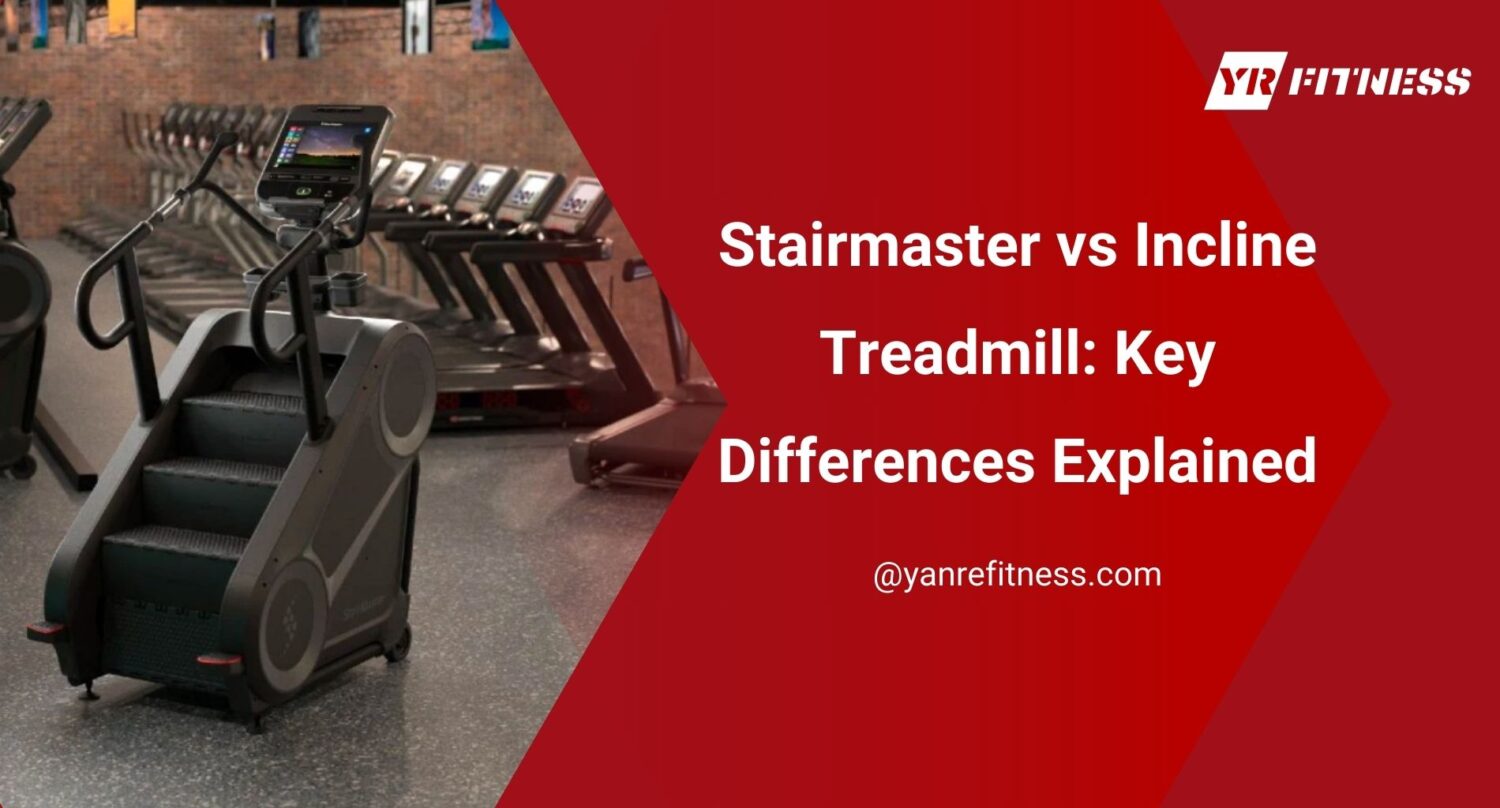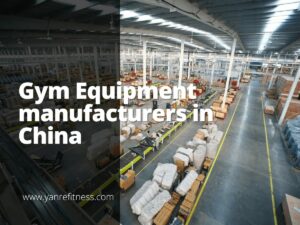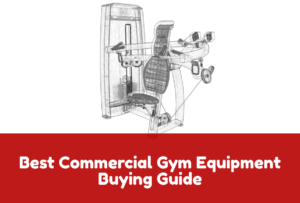When I opened my first gym, I bought both a Stairmaster and an incline treadmill. I thought I was playing it safe by offering both.
What happened next surprised me.
Members used them for different goals. Some used both. Others stuck to one. But the biggest surprise? One machine needed repairs twice as often.
I’ve been running gyms for years now, and this early lesson taught me how important it is to know the details—not just the brand name.
This guide will walk you through what I’ve learned. You’ll get a clear look at which machine fits your space, your clients, and your business.
Let’s get started!
Table of Contents
1. What is Stairmaster?
I watched members approach the Stairmaster with curiosity. Some stepped on thinking it would be easy. Within minutes, they were winded, legs burning, drenched in sweat—and coming back for more.
The Stairmaster isn’t just another cardio machine. It replicates stair climbing using a rotating staircase, delivering a powerful blend of strength and cardio.
Key Features
- Rotating Staircase: Steps move continuously in a loop, simulating stair climbing without forward motion.
- Adjustable Step Speed: Can set the pace to increase or reduce workout intensity.
- Digital Display Console: Shows key stats like time, steps, calories burned, and heart rate.
- Built-in Workout Programs: Includes options for fat burn, strength building, and interval training.
- Heart Rate Monitoring: Most models come with sensors on the handrails for live heart rate tracking.
- Compact Design: Takes up less floor space than many other cardio machines.
In commercial gyms, Stairmasters are often placed in HIIT zones or cardio corners. Popular use cases include:
- Targeting the glutes and hamstrings
- Weight loss circuits
- Lower body endurance training
What stood out the most? The Stairmaster demanded effort, every single time. That consistent challenge kept your members engaged and made it a core tool in our programming.
2. What is Incline Treadmill?
I noticed early on that many members gravitate toward incline treadmills—not just for walking or running, but for structured, low-impact workouts that still feel challenging.
An incline treadmill looks like a traditional treadmill but adds vertical resistance by tilting the running deck. Most commercial models offer inclines from 0% to 15% or higher. This adjustable slope simulates uphill walking or running—without needing users to increase speed. That combination helps elevate heart rate, burn more calories, and activate lower body muscles, especially glutes, calves, and hamstrings.
Key Features
- Incline Adjustment: Raises the treadmill deck at various angles to add resistance and simulate uphill movement.
- Digital Console: Shows incline level, speed, time, distance, calories, and heart rate.
- Preset Programs: Includes hill climbs, intervals, endurance walks, and fat-burning modes.
- Shock Absorption: Cushioned belt helps reduce impact on joints.
- Flat Mode: Can also function like a standard treadmill with no incline.
In my own experience, incline treadmills are one of the most used machines on the floor. They’re simple, quiet, and get results.
For gym owners, they offer versatility and strong member appeal—without taking up much space. If you’re looking for the best one for your gym, choose YR Fitness. Our treadmills are built to last.
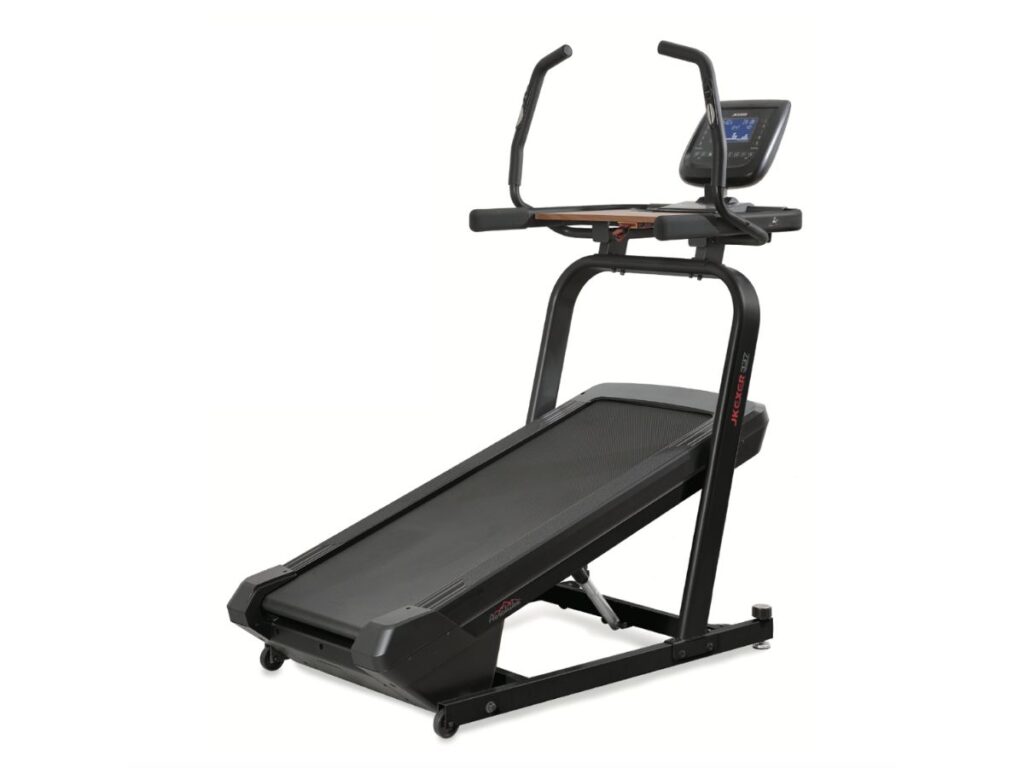
3. Functional Differences
After years of watching members use these machines—and testing both myself—it’s clear they serve different purposes. Both have value. But they’re not interchangeable.
Here’s how they compare across function, effort, and accessibility.
Workout Intensity and Muscle Activation
The Stairmaster is intense. Every step feels like a mini squat. It hits the glutes, hamstrings, and calves hard. I’ve seen clients get winded in just a few minutes—and I’ve been there myself. It’s more than just cardio. It builds strength too. That’s why many trainers use it for short bursts or interval work.
The incline treadmill, though, feels more steady. It’s great for longer sessions. It works the calves and quads, especially during uphill walks—like what you’d get from a spinning bike’s focused resistance training in a cardio setting. It doesn’t feel as heavy on the legs as the Stairmaster—but it still gets the heart pumping.
Cardiovascular Benefit
Both machines raise heart rate quickly. However, the Stairmaster tends to spike heart rate faster in less time, which supports interval-style workouts and high-calorie burn.
The incline treadmill works well for longer, moderate-intensity sessions, helping users maintain heart rate over time without extreme fatigue.
User Accessibility
The Stairmaster generally suits intermediate or advanced users. Its movement and step control can feel challenging for beginners.
In contrast, the incline treadmill is easier to use and fits all fitness levels. Trainers often recommend it for new members, rehab clients, or those easing into cardio routines.
4. Installation and Usage Efficiency
Selecting the right machine isn’t just about workouts—it’s also about space, setup, and how well it fits into the gym’s daily flow. After installing both in different facilities, here’s what’s worth knowing.
Footprint and Ceiling Clearance
The Stairmaster is compact on the floor. That’s a plus in smaller gyms. But it’s tall. Most models need higher ceiling clearance—especially for taller users.
The incline treadmill has a longer base, so it takes up more floor space. But ceiling clearance usually isn’t an issue. A standard gym ceiling works just fine.
Power Needs and Portability
Both machines plug into a standard power outlet—no special wiring required.
Neither is portable.
Once set in place, they usually stay there. The incline treadmill might need extra room behind it for safety and airflow, depending on the model.
User Flow and Traffic
Here’s something gym owners often overlook—how long each user stays on the machine.
Stairmaster sessions are usually shorter. But users tend to stay longer between sets or need recovery time. That slows down traffic, especially during peak hours.
Incline treadmills handle more variety. Members walk, jog, or do intervals at different speeds, so they move through faster. More users per hour means better usage during busy times.
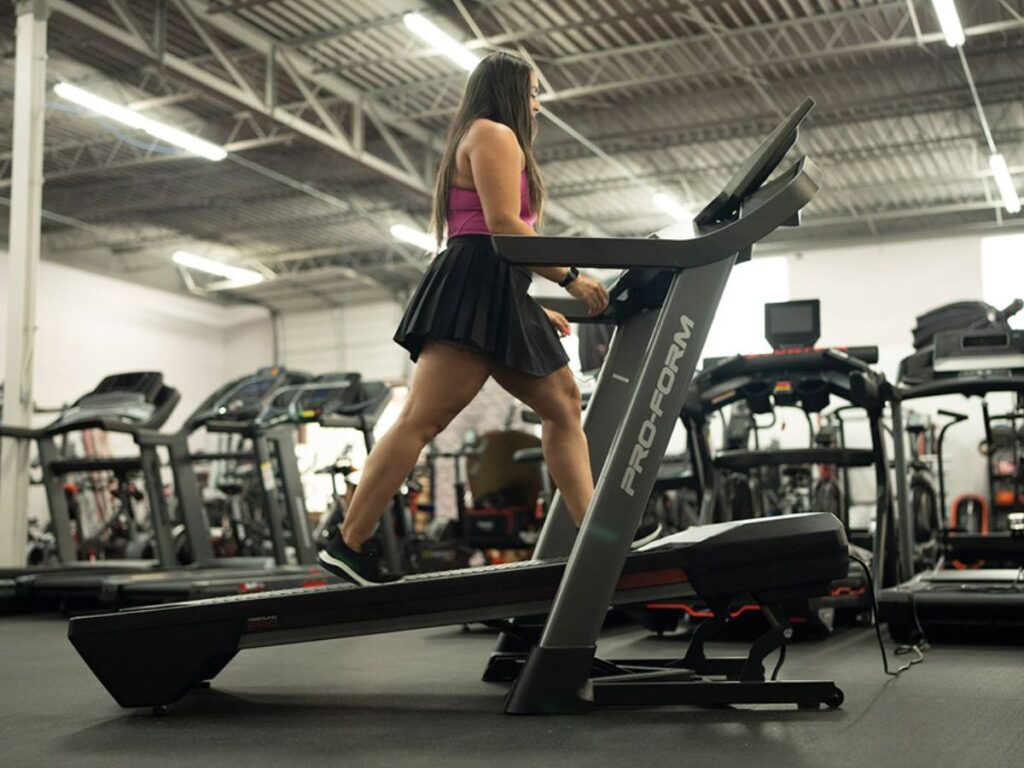
5. Durability and Maintenance Requirements
Over the years, I’ve had to service both Stairmasters and incline treadmills more than once. Each has its own wear points—and knowing where those are can save time and money in the long run.
Mechanical Stress Points
The Stairmaster has a rotating step system that runs under constant pressure. The main stress points are the moving stairs, chain drive, and internal lift mechanism. These parts keep the machine going but take a beating, especially in high-traffic gyms.
The incline treadmill relies heavily on its motor, belt, and incline motor assembly. When one of those components starts to wear, performance drops fast.
Typical Maintenance Issues
Stairmasters and incline treadmills are built for commercial use, but each has its own weak points. Knowing the most common maintenance issues—and how to prevent them—can help gym owners reduce downtime and protect long-term value.
Machine Type | Common Issue | How to Avoid |
Stairmaster | Step tension loosening over time | Schedule monthly inspections and adjust tension during preventive maintenance. |
Worn-out bearings in step arms or drive system | Lubricate moving parts and replace bearings annually or as wear appears. | |
Noisy operation or clicking during use | Check for loose hardware and worn bushings; tighten or replace as needed. | |
Error codes related to drive chain | Inspect drive chain monthly for slack or wear; replace if stretched or rusted. | |
Console/display malfunction | Test console wiring regularly; clean contacts and secure loose connections. | |
Overheating during extended use | Improve ventilation, clean dust from motor housing, and rotate usage. | |
Incline Treadmill | Belt misalignment or slippage | Perform weekly alignment checks; keep the belt tension even on both sides. |
Motor overheating after long sessions | Allow cool-down periods; clean motor vents and check fan operation monthly. | |
Console freeze or software lag | Update firmware regularly and restart system weekly. | |
Uneven belt wear | Rotate usage across machines and avoid repeated use at maximum incline. | |
Incline motor failure or jammed mechanism | Avoid sudden incline changes under load; inspect incline motor quarterly. | |
Deck wear or cracks | Replace deck surfaces based on usage hours; monitor for squeaks or drag. |
Servicing and Repair
Both machines require scheduled upkeep. But from experience, incline treadmills are usually easier to service. Access panels are larger, and parts are more standardized. That speeds up basic tasks like belt adjustments or motor checks.
Stairmasters take a bit more time to open and diagnose. The parts are more specialized, and not all service teams carry replacements in stock.
Average service intervals for both machines tend to be:
- Every 6 months for basic checks (belts, lubrication, firmware updates)
- Full service once a year, or sooner if usage is heavy
Vendor support and part availability are generally good for both—as long as the gym sticks to major commercial brands.
6. Safety Considerations
Safety plays a big role in machine selection—especially in high-traffic gyms. It’s not just about features, but how different user groups interact with the equipment day after day.
Risk of Injury
The Stairmaster comes with a higher fall risk, especially for users who are fatigued or unfamiliar with the stepping rhythm. One missed step can lead to a slip. It’s not uncommon to see users step off early to catch their breath.
The incline treadmill carries a lower fall risk, but not zero. Tripping can still happen, particularly at higher speeds or steeper incline levels. Most issues occur when users lose focus or step too far back on the belt.
Support Features
Both machines are equipped with safety tools.
Stairmaster:
- Side rails for grip
- Emergency stop button in case of missteps
Incline Treadmill:
- Handrails along both sides
- Safety key clip that cuts power if the user falls
- Emergency shut-off for quick stops
Suitability for Rehab or Older Populations
From a gym management standpoint, the incline treadmill is the safer option for beginners, older adults, and rehab clients. It offers adjustable speeds and inclines, making it easier to scale based on ability.
The Stairmaster is more intense by nature. While effective, it’s not always suitable for every member group—especially those with balance issues or low cardiovascular endurance, which is why ellipticals are often preferred for rehab or beginner training.
Every machine brings benefits, but they also come with limits. Knowing which users are most at risk helps reduce incidents and keeps the gym running safer, longer.
7. Cost and ROI
Cardio machines are big investments. And not just in price. The real cost comes down to how often they’re used, how long they last, and how much value they bring to the floor.
Over the years, I’ve purchased both Stairmasters and incline treadmills for different gym setups. Some paid off quickly. Others sat unused longer than expected. That experience taught me to look beyond just price tags.
Initial Investment
A commercial Stairmaster usually runs between $4,000 and $7,500. Top-tier models with larger screens or extra features can reach $8,000 or more. It’s a serious cost—especially for smaller gyms working with limited capital.
In comparison, a commercial incline treadmill comes in at $2,500 to $5,000, depending on build quality and brand. Even at the high end, it’s often still cheaper than a Stairmaster. That matters when ordering two or more units. At YR Fitness, we offer treadmills at competitive pricing—built for commercial use, easy to maintain, and designed to meet the daily demands of busy gym environments.
In tight spaces or start-up gyms, that price gap can decide which one makes the floor.
Maintenance and Operational Costs
Here’s where things get real for long-term planning.
Incline treadmills are easier to service. Belts wear out, motors heat up—but most repairs are familiar and straightforward. Basic fixes often cost under $500, and in-house staff can handle smaller tasks.
The Stairmaster, on the other hand, has more going on inside. Rotating steps, drive chains, bearings—it’s a tougher machine. Parts cost more, and repairs can take longer. A single fix might run $800 to $1,200, and that’s if the service team has the right parts on hand.
Return on Investment
Incline treadmills usually pay themselves off faster. High usage, low maintenance, and wider appeal mean the investment returns in 12 to 18 months, sometimes sooner in high-volume gyms.
Stairmasters take longer—18 to 30 months isn’t uncommon—but they offer something different. They stand out. They build a reputation. And they give advanced members a reason to keep coming.
In my own gyms, I’ve found it works best to have both. Treadmills keep the floor moving. Stairmasters build loyalty.
8. Tips For Choosing Between Stairmaster and Incline Treadmill
Choosing between a Stairmaster and an incline treadmill isn’t just about comparing features—it’s about making the right decision for the gym, the members, and the long-term value. Below are 3 practical tips to help gym owners like you make a smart, informed choice.
Tip#1 Align Equipment with Member Demographics
Start by evaluating the primary user base. If the gym serves a broad demographic—such as beginners, older adults, or members involved in rehab—incline treadmills are typically the safer, more inclusive option. They’re easier to operate, offer a smoother learning curve, and can be used across all fitness levels.
Tip#2 Assess Floor Space and Traffic Flow
Equipment needs to fit physically both on the floor and vertically. Stairmasters have a compact footprint but require higher ceilings due to their step height and climbing motion.
If ceiling height is limited, lean toward an inclined treadmill. If saving floor space is more important and ceiling height isn’t an issue, a Stairmaster could be a smarter use of the layout.
Tip#3 Evaluate Maintenance Resources and Service Speed
Think beyond purchase cost—consider how easy the machine is to maintain. Incline treadmills are generally easier to service, with more readily available parts and routine fixes like belt tracking and motor checks.
Stairmasters have more complex mechanics, which means longer service times and higher repair costs.
If quick repairs and lower service bills are a priority, the incline treadmill offers fewer maintenance headaches.
Tip#4 Think About Programming Flexibility
Equipment should support your programming goals. Incline treadmills are easy to plug into group classes, personal training sessions, warm-ups, and cool-downs. They’re versatile and familiar. Stairmasters tend to be used for solo workouts or high-intensity circuits. They don’t blend into large group formats as easily.
If your gym runs circuit-based or group training formats, go with incline treadmills. If your clients lean toward one-on-one or advanced solo sessions, consider a Stairmaster for added intensity.
Conclusion
So which one is best?
The truth? There’s no single winner—only the right choice for your gym.
Stairmasters hit hard and build strength fast. Incline treadmills bring steady, everyday value with less risk.
I’ve tested both in real gyms. I’ve seen what breaks and what brings members back.
This guide gave you the facts. Now use them.
Contact YR Fitness today to get expert help, quality machines, and real results!
Related articles:
